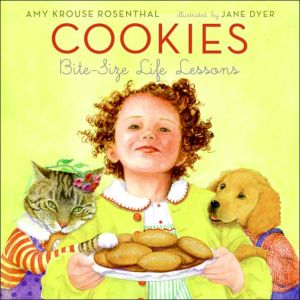Never Talk to Strangers
If you are hanging from a trapeze , And up sneaks a camel with bony knees, , Remember this rule, if you please--, Never talk to strangers! , , So begins this cautionary tale, told in a lighthearted, entertaining manner and illustrated with colorful, humorous pictures.\ \ Discusses different situations to help make important distinctions between people who are "safe" and people to avoid.\
Search in google:
If you are hanging from a trapezeAnd up sneaks a camel with bony knees,Remember this rule, if you please—Never talk to strangers.This book brilliantly highlights situations that children will find themselves in—whether they’re at home and the doorbell rings, or playing in the park, or mailing a letter on their street—and tells them what to do if a stranger (always portrayed as a large animal, such as a rhino) approaches. Colorful, ’60s-style “psychedelic” artwork and witty, lively rhyme clearly spell out a message about safety that empowers kids, and that has never been more relevant.Irma Joyce wrote many Golden Books during the 1960s.George Buckett was a popular children’s book illustrator during the 1960s.Children's LiteratureFirst published in 1967, Never Talk to Strangers uses a repetitive rhyme scheme along with silly pictures to teach children not to interact with strangers, unless the stranger is someone they meet through family, friends, or a teacher. In these situations, it is not a stranger. Given the fact that we know more about who is most likely to harm a young child today than we did in 1967, it seems that those who might want to harm a child would insinuate themselves into the child's world through a trusted friend or relative. While we cannot teach children to be afraid of everyone they meet, we can do a better job of helping a child to trust his or her own instincts, rather than presenting a narrow view of stranger-fear. The highlights of this book are the silly animals stalking through its pages: the curly haired camel, the rhinoceros with an umbrella hanging from his tail as he reads the newspaper, and the brightly colored crocodile with the wickedly evil grin. While the message is told in an attractive manner, I have to question if this is the message we want to be telling. Reviewer: Wendy M. Smith-D'Arezzo
\ Children's Literature\ - Wendy M. Smith-D'Arezzo\ First published in 1967, Never Talk to Strangers uses a repetitive rhyme scheme along with silly pictures to teach children not to interact with strangers, unless the stranger is someone they meet through family, friends, or a teacher. In these situations, it is not a stranger. Given the fact that we know more about who is most likely to harm a young child today than we did in 1967, it seems that those who might want to harm a child would insinuate themselves into the child's world through a trusted friend or relative. While we cannot teach children to be afraid of everyone they meet, we can do a better job of helping a child to trust his or her own instincts, rather than presenting a narrow view of stranger-fear. The highlights of this book are the silly animals stalking through its pages: the curly haired camel, the rhinoceros with an umbrella hanging from his tail as he reads the newspaper, and the brightly colored crocodile with the wickedly evil grin. While the message is told in an attractive manner, I have to question if this is the message we want to be telling. Reviewer: Wendy M. Smith-D'Arezzo\ \








